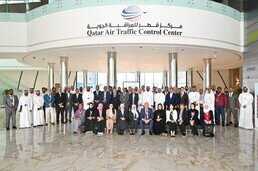
Dining At Airports In The Midst Of COVID-19: Calling on airport F&B experts in Asia-Pacific and the Middle East to join new working group
- 2022-03-10
Calling on airport F&B experts in Asia-Pacific and the Middle East to join new working group
ACI Asia-Pacific is calling on Airport Members, as well as World Business Partners in the region who specialize in the domain of food and beverage (F&B) to join ANARA1 and its prospective working group on the subject. ANARA signifies the Airports’ Non-Aeronautical Revenues and Activities group, a sub-committee of the ACI World Standing Economics Committee. ANARA is planning to launch a dedicated working group on airport food and beverage later in March.
Why the interest on airport F&B?
The simple idea of dining or eating out at restaurants has changed significantly over the past two years. The concept of “normal” has become blurred. Before entering restaurants, it is now a custom, or requested by law in some countries, for diners to have their body temperature checked, hands sanitized, and personal details recorded for tracking and tracing, all before they are allowed to sit down, look at the menu, and remove their face masks.
As for dining at airports, the COVID-19 pandemic has created impossible hurdles for businesses. Restaurants have been hit hard by the reduction in passenger traffic as a result of border closures, social distancing measures, and nationwide lockdowns. On top of that, financial burdens arose from capacity reductions, installation of disinfection equipment, and COVID-19 testing for staff.
Before the advent of COVID-19, non-aeronautical revenues accounted for about 40% of total airport revenue at the global level. Food and beverage activities contributed about 6%2 to all non-aeronautical revenue. Amongst all regions3, Asia-Pacific airports had the highest proportion of non-aeronautical revenue, at around 50%. Approximately 4% of all airport non-aeronautical revenues in the region came from food and beverage activities. In response to the diverse passenger profiles and demand, airports have been offering dining options ranging from grab-and-go kiosks, casual restaurants, bars and pubs to Michelin Star status fine dining. In fact, food and beverage was an increasingly important component of airport revenues, which were on an upward trend for 10 years preceding the pandemic, growing at about 10% year-over-year.
It is clear that we are quite some distance away from a global recovery. Although ACI estimates passenger traffic will return to 2019 levels in the next two to three years, the newly released forecast shows that passenger traffic at both global and regional levels would grow at the rate of +8.7% per year in the next two decades4. The pandemic serves as a perfect opportunity for businesses and airports to re-strategize and rethink their business models in anticipation of the increase in future demand.
Mounting interest in airport food and beverage
Nonetheless, as we enter the third year of the pandemic, the topic of food and beverage has been left unaddressed so far and the level of interest is mounting. Food and beverage is an important revenue stream for airport operators and it deserves unique attention regardless of whether passengers just want to get a quick bite, or are looking for an exquisite dining experience while watching aircraft take-off and land.
The food and beverage industry has been growing even outside of the airport realm. More people are choosing to dine out for a number of reasons, including the convenience factor and lack of time to cook at home and the social incentive of being with other people. Even more important is the general move from materialistic consumption to experiential consumption, where restaurants and other food and beverage outlets represent an opportunity to enjoy and explore the ever-growing options for dishes and drinks.
When it comes to airports, they offer an additional layer of convenience on one hand and sophistication and glamour on the other hand: from a conventional cup of coffee while rushing to the gate for an early morning flight, to an exquisite food and wine bar with an airside view making it a perfect place to grace a longer layover.
However, like with any other type of business, there are numerous threats and opportunities surrounding food and beverage at airports which need to be duly addressed by the airport community and their commercial counterparts. There are also important lessons learnt by airports and food and beverage operators which can serve as a reference for their peers, and also best practices that can be discussed and shared for the benefits of travellers, airports, commercial operators, and the wider aviation ecosystem.
ANARA embraces diversity, Airport Members of all sizes and World Business Partners representing various types of food and beverage activities and various scales of operation are warmly welcome to participate in this working group. Interested parties are invited to contact:
- Mr. Ilia Lioutov, Senior Expert, Airport Economics and ESG, Secretary of ANARA
- Mr. Philip Kwok, Economic Research Analyst
1. ACI World Sub-Committee on Airports’ Non-Aeronautical Revenues and Activities
Acknowledging the importance of non-aeronautical revenue as an essential part of airport economics, including the business of food and beverage, ACI World established ANARA in early 2021 and provided a global platform for discussing, brainstorming, investigating, analyzing, and formulating strategies, policy recommendations, and industry positions on how best to improve, facilitate, and diversify the range of non-aeronautical revenue sources for the benefit of the air transport ecosystem.
ANARA developed a working agenda and identified four initial areas of focus: digital transformation, concession agreements, duty-free, and ground access. Each area of focus included a working group staffed with experts from Member Airports and World Business Partners from around the world, with the mission to develop position statements, guidance material, and other reference documents to enable our industry stakeholders to improve the traveller experience and recover from the pandemic in a sustainable manner.
2. ACI World 2021 Airport Key Performance Indicators (2019 data)
3. ACI regions – Africa, Asia-Pacific, Europe, Latin America-Caribbean, Middle East and North America
4. ACI World Annual World Airport Traffic Forecasts (WATF) 2021-2040
Disclaimer: Acceptance of applications will be at the discretion of the Chair, Vice-Chair, and the Secretary of the ANARA sub-committee. Even though there is no constraint on the number of members admitted to ANARA, membership will be limited to ACI member airport operators and World Business Partners. Other non-member organizations may be invited on a need-basis to present pertinent activities and findings (e.g., research, software, services, etc.) and at the discretion of the Chair, Vice-Chair, and the Secretary of the sub-committee.
- CATEGORY
- COUNTRY / AREA
- Hong Kong SAR
- AUTHOR
- ACI Asia-PacificIlia Lioutov, Philip Kwok











